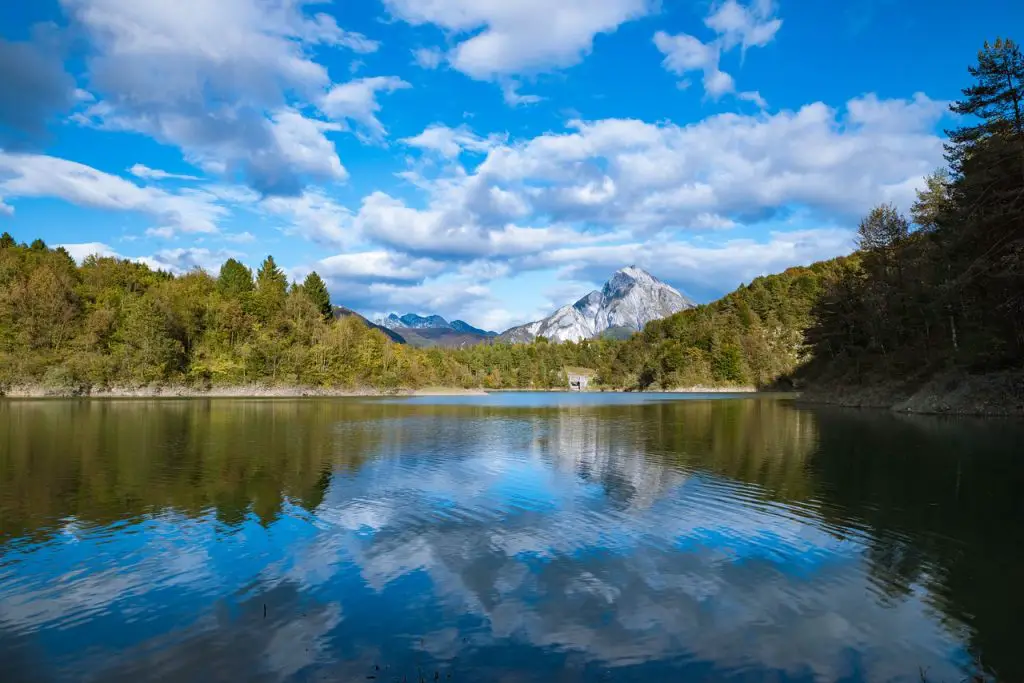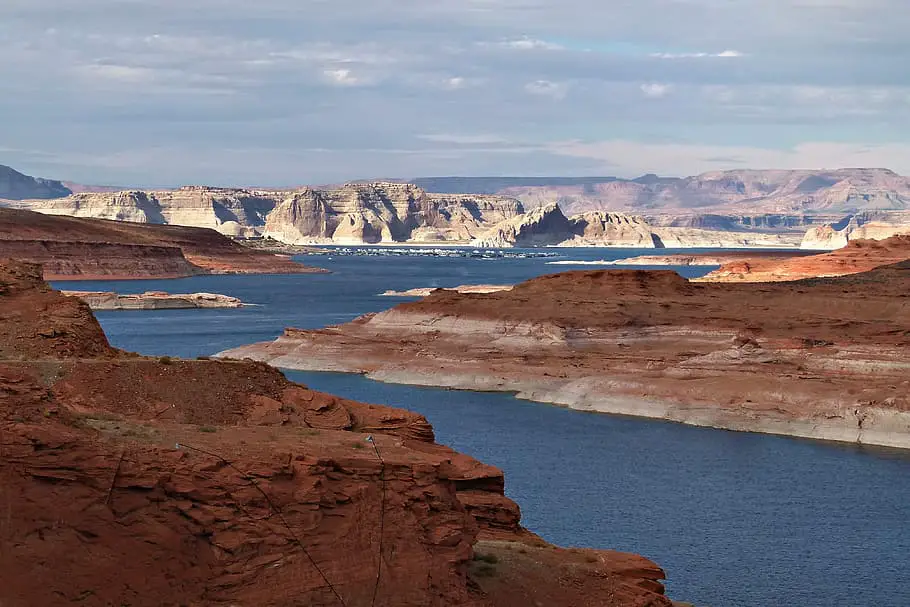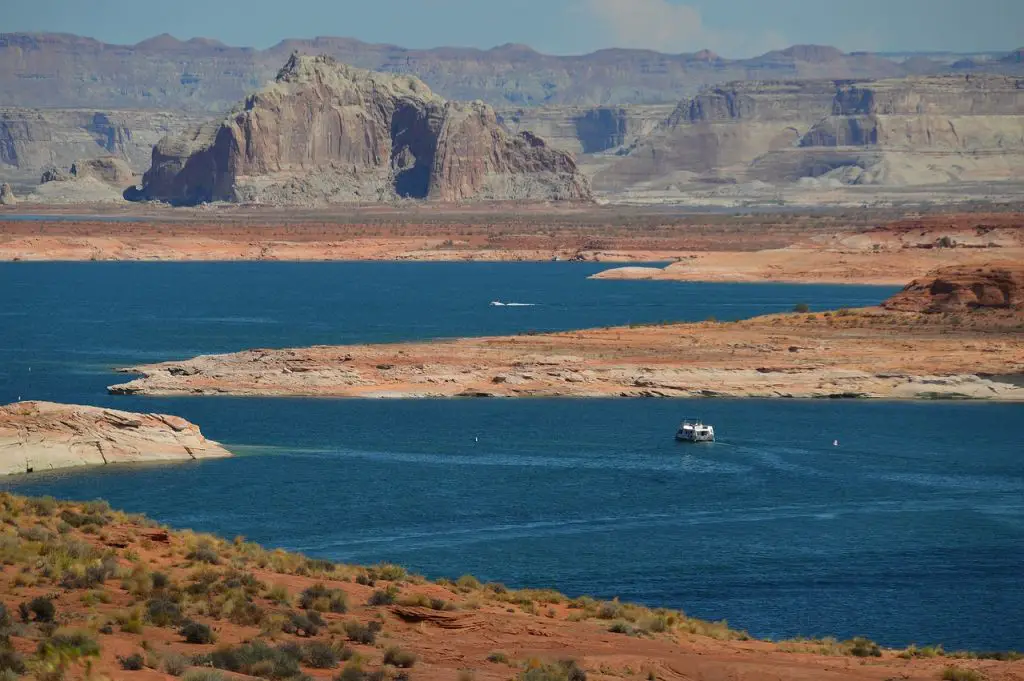Arizona, typically recognized for its striking desert landscapes, holds more than meets the eye. It is home to a diverse range of bodies of water that not only contribute to the ecological variety but also significantly enhance its scenic beauty.

From the formidable Colorado River to the serene waters of Lake Mead, every aquatic feature presents a unique narrative. In this article, we delve deep into the bodies of water in Arizona, unraveling their historical, ecological, and recreational facets.
Major Rivers in Arizona
The rivers of Arizona play a significant role in sculpting the state’s terrain and sustaining its ecosystems. They provide much-needed water resources in the arid environment, acting as lifelines for human communities and wildlife alike.
The Colorado River, an essential waterway carving its way through seven U.S. states, holds significant relevance to Arizona. Historically, it served as a primary route for explorers and settlers, driving the state’s growth and development. Today, the Colorado River continues to be a vital water source, serving an estimated 40 million people in the region (U.S. Bureau of Reclamation).
Arizona’s section of the Colorado River showcases an impressive ecological diversity, supporting various unique habitats. Its riparian zones provide shelter to a multitude of bird species, making it a haven for birdwatchers (National Park Service). But the river’s significance extends beyond providing habitat; it is also crucial for maintaining the delicate ecological balance of the region.
Salt River: A Key Water Source for Phoenix
The Salt River, a major tributary of the Gila River, is equally noteworthy. It is best known for supplying water to Arizona’s largest city, Phoenix. The city’s canal system, which largely depends on the Salt River, showcases the integral role this river plays in the urban landscape. The river also provides essential habitats for a diverse range of wildlife, including several species of fish and birds.
On the recreational front, the Salt River attracts numerous visitors each year. It offers an array of activities, such as tubing, kayaking, and wildlife viewing, that draw both locals and tourists alike (Salt River Tubing). Hence, the Salt River not only serves as a crucial water resource but also significantly contributes to the state’s tourism industry.

Gila River: A Historic Waterway
The Gila River, another significant river in Arizona, has a rich history dating back centuries. It was once the lifeblood of the Hohokam culture, one of the most advanced civilizations in the region (Arizona State Museum). The river facilitated their extensive farming operations, supporting the growth of their communities.
Modern-day agriculture along the Gila River continues, although it now faces challenges due to over-extraction and pollution. Recognizing the environmental importance of the river, several conservation initiatives are underway to protect and restore the Gila River’s ecosystems.
These efforts highlight the balance between using this vital resource and preserving it for future generations.
Lakes and Reservoirs in Arizona
Arizona’s lakes and reservoirs add another dimension to its water landscape. They offer recreational opportunities, support wildlife, and serve as crucial water storage facilities. They also significantly contribute to the state’s aesthetic appeal, creating a stark contrast against the backdrop of desert landscapes.
Lake Powell: A Jewel of the Colorado River
Lake Powell, formed by the damming of the Colorado River, is one of Arizona’s most beautiful and visited bodies of water. It is known for its striking blue waters, sandstone cliffs, and over 2,000 miles of shoreline, attracting millions of visitors annually for recreational activities like boating, fishing, and hiking (National Park Service – Lake Powell).
Despite its popularity, Lake Powell also faces ecological concerns. Water levels in the lake have been declining due to persistent drought conditions and overuse. Addressing these issues is critical to preserving Lake Powell’s beauty and ecological health.
Lake Mead: The Largest Reservoir in the United States
Lake Mead, another reservoir formed by the Colorado River, holds the title of the largest reservoir in the United States. Apart from being a popular spot for recreational activities like swimming, fishing, and boating, it also plays a crucial role in hydropower generation (Lake Mead National Recreation Area).
Hydropower from the Hoover Dam, which creates Lake Mead, supplies electricity to several states, demonstrating the lake’s economic significance. Moreover, Lake Mead is a vital water source for millions of people in the southwest, further emphasizing its importance in the region.
Roosevelt Lake: A Central Arizona Landmark
Roosevelt Lake, located in central Arizona, is a vital part of the region’s water system. It was created in the early 20th century with the construction of the Theodore Roosevelt Dam, primarily to supply water for agricultural use.
Nowadays, Roosevelt Lake is a major recreational destination, offering a variety of water-based activities like fishing, boating, and swimming. It’s also home to a diversity of wildlife, from bald eagles to big horn sheep, making it a favored spot for nature lovers.

Wetlands and Riparian Areas in Arizona
Wetlands and riparian areas in Arizona, while often overlooked, are vital ecosystems supporting a wealth of biodiversity. Despite Arizona’s dry reputation, these wet areas provide refuge for a variety of plant and animal species.
Ciénega Creek, located in southern Arizona, is one such wetland of significant ecological importance. It supports a diversity of flora and fauna that depend on the creek’s permanent water, from fish and amphibians to a wide array of bird species (Pima County).
Given the ecological importance of the creek, several conservation initiatives are in place to protect and preserve its unique habitats. These efforts not only benefit the wildlife but also contribute to maintaining Arizona’s ecological diversity.
Hassayampa River Preserve: A Riparian Oasis
Another important wetland in Arizona is the Hassayampa River Preserve. This preserve, encompassing riparian habitats along the Hassayampa River, offers a critical refuge for a multitude of plant and animal species in the heart of the Sonoran Desert.
The preserve’s lush vegetation and perennial water attract a diversity of wildlife, from over 280 species of birds to mammals like bobcats and coyotes (Nature Conservancy). This makes the preserve not just an ecological oasis but also a fantastic location for wildlife viewing and nature walks.
Man-Made Water Bodies in Arizona
Arizona’s ingenuity in water management is reflected in its man-made water bodies. These include reservoirs, canals, and urban lakes, each serving specific purposes such as irrigation, municipal water supply, flood control, and recreation.
These engineered structures, while not natural, play a significant role in the state’s water narrative, providing vital resources in an environment where water scarcity is a constant challenge. They also bring unique recreational opportunities, enhancing the state’s appeal to outdoor enthusiasts and city dwellers alike.
These man-made water bodies, set against Arizona’s desert backdrop, serve as a testament to human adaptability and innovation in the face of environmental constraints.
Central Arizona Project (CAP): An Engineering Marvel
One of the most ambitious man-made water bodies in Arizona is the Central Arizona Project (CAP). It is a 336-mile-long system of aqueducts, tunnels, and pumping plants constructed to deliver Colorado River water to central and southern Arizona (Central Arizona Project).
The CAP not only supports municipal water supplies and agriculture but also contributes to groundwater replenishment. Its existence underlines the innovative solutions devised to meet Arizona’s water needs in its dry environment.
Tempe Town Lake: Urban Oasis in the Desert
Tempe Town Lake, created on a historically dry riverbed, offers a slice of water-based recreation in the heart of the Phoenix metropolitan area. Since its completion, it has transformed into a hub for water sports and outdoor activities, hosting events such as regattas and triathlons (City of Tempe).
Despite being an artificial lake, Tempe Town Lake supports a surprising amount of wildlife, providing an urban refuge for many bird species. Its presence significantly enhances the aesthetic appeal and livability of the city.
The Role of Water Bodies in Arizona’s Ecology and Recreation
Water bodies in Arizona, whether natural or man-made, hold immense ecological and recreational importance. They support diverse ecosystems, contribute to the state’s scenic beauty, and provide myriad recreational opportunities.
Ecological Significance: Supporting Biodiversity
From riparian habitats along rivers to wetlands and lakes, these aquatic environments host a wealth of plant and animal species. They not only contribute to the state’s biodiversity but also serve as crucial stepping stones for migratory birds.
Conservation initiatives centered on these water bodies highlight their ecological value. These efforts aim to protect and restore aquatic habitats, ensuring their resilience in the face of climate change and human impacts.
Recreational Opportunities: A Water-Lover’s Paradise
Despite its arid reputation, Arizona offers a wealth of water-based recreational activities. Fishing, boating, swimming, birdwatching, and watersports are popular pastimes at the state’s rivers, lakes, and reservoirs. Annual events, like regattas and fishing tournaments, add to the recreational allure of these water bodies.
Water Conservation: Safeguarding Arizona’s Aquatic Resources
While celebrating Arizona’s water bodies, it’s essential to acknowledge the pressing need for water conservation. The state’s arid climate, coupled with increasing water demand, poses challenges to the health and longevity of these resources.

Efforts to conserve water, from individual actions to state-wide initiatives, are crucial to preserving Arizona’s water bodies for future generations. Understanding the importance of water conservation can inspire Arizonans and visitors alike to make sustainable choices that safeguard these valuable resources.
FAQs:
In this section, we will be delving into some of the most common inquiries and curiosities that surround our topic.
What is the largest body of water in Arizona?
Lake Mead, formed by the Hoover Dam on the Colorado River, is the largest reservoir in the United States and the largest body of water in Arizona.
Are there any natural lakes in Arizona?
While many of Arizona’s lakes are man-made reservoirs created by damming rivers, the state does have a few natural lakes. These are typically small and located in the mountains, such as the White Mountains in eastern Arizona.
Can you swim in the lakes in Arizona?
Many lakes and reservoirs in Arizona are popular for swimming, boating, and other water sports. However, it’s important to check with local regulations as some bodies of water may have restrictions.
How does Arizona get its water?
Arizona gets its water from a mix of sources, including surface water (from rivers like the Colorado River), groundwater, and reclaimed water. The Central Arizona Project, a man-made canal system, also transports water from the Colorado River to central and southern parts of the state.
Conclusion
Bodies of water in Arizona are undeniably integral to the state’s identity. They offer a stark contrast to the arid landscapes, providing ecological refuges, recreational hotspots, and critical water resources.
While each body of water has a unique story to tell, they collectively highlight the diverse and vibrant water landscape of Arizona.
Understanding and appreciating these water resources is not just about knowing Arizona better, but also about fostering a sense of stewardship towards preserving these aquatic treasures for future generations.



Leave a Comment
You must be logged in to post a comment.